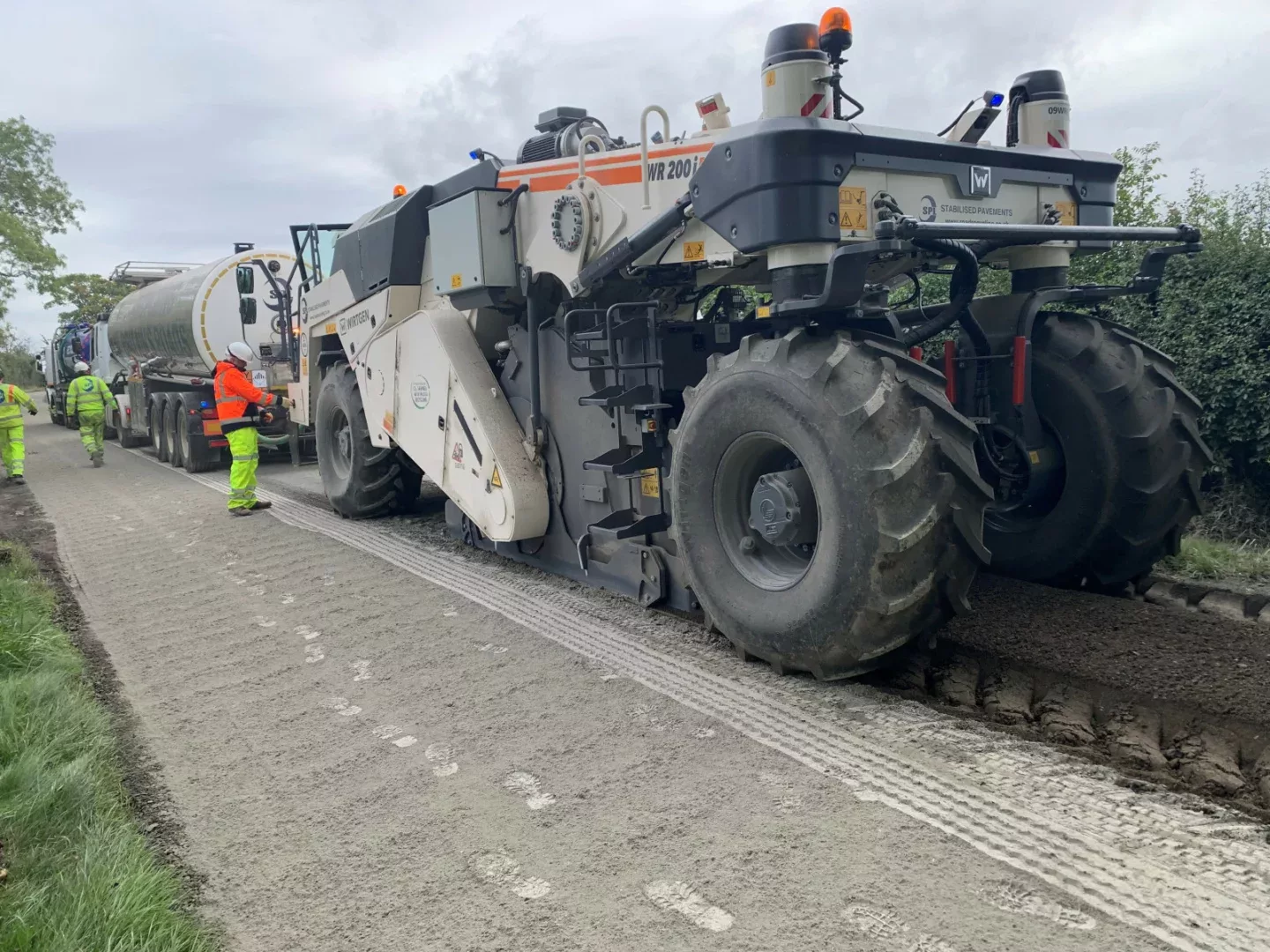A south Oxfordshire road has being resurfaced using an innovative recycling technique which reuses all of the existing surfacing material and saved hundreds of tonnes of carbon.
The technique, known as in-situ cold recycling, also allowed the road to be reopened eight days quicker than by using conventional resurfacing techniques.
Oxfordshire County Council carried out the scheme on a road north of Berrick Salome, near Wallingford, with its contractor Milestone Infrastructure and its partner Stabilised Pavements Limited.
Councillor Andrew Gant, Oxfordshire County Council’s Cabinet Member for Highway Management, said: “We know how important the quality of our roads is to our residents, as well as the need for the county council to reduce the embodied carbon of its highway maintenance work. That is why we’re delighted to be delivering this scheme to make our residents’ money go further and reduce disruption.
“Innovation is at the heart of what our highway teams do. This new technique could be another weapon in our armoury to help ease the burden on highways budgets and cut carbon emissions in our projects.”
In-situ cold recycling involves pulverising the existing carriageway in its original place and then mixing it with foamed bitumen and cementitious powder to create a new 300mm-deep strengthened carriageway.
The material is then compacted to return the recycled layer back to the required road level before a thin surface layer, known as surface dressing, is applied to seal the surface and provide the required skid resistance.
As the technique does not require the material to be heated and involves a lot less import of virgin materials, it is an environmentally friendly technique. It is estimated to reduce carbon by approximately 71 per cent compared to conventional surfacing of the same depth.
On this scheme alone, this is the equivalent of 227 tonnes of carbon – roughly the same as taking over 100 petrol cars off the road for a year.
The new road surface is expected to last for at least 20 years, with routine maintenance. It also has the benefit of cutting 564 lorry movements to and from site, reducing the impact on local communities.
This Berrick Salome project is the latest in a series of innovations on the county’s roads, following:
- A third trial involving the longer lasting Graphene Plus-enhanced asphalt Gipave in Middle Barton in August.
- A trial of new lower carbon materials at a Wantage access road scheme in August.
- The testing of seven different pothole repair methods on a road in Steventon in July.
Phil Raven, Head of Technical Design for Milestone on the Oxfordshire Contract, said: “As we look for new ways to reduce carbon emissions within highways maintenance, increasing the use of recycled materials in our surfacing materials is an important tool in Milestone’s plan towards achieving net zero by 2040. This is the first time we have been able to use this particular technique on our Oxfordshire network.
“Not only can this lead to carbon reduction and a cost-effective way to repair a rural highway, it can reduce disruption to road users and reduce lorry movements in local communities. This project is a good example of Milestone and Oxfordshire County Council being at the forefront of using innovative techniques to maintain the county’s roads.”
The Berrick Salome scheme is a £740,000 project, which also includes significant drainage repairs. The scheme started on 21 August and is planned to last for five weeks. The 1,650-metre length of surfacing work was completed in six days.
The work is being carried out under a full road closure due to the narrow width of the road to ensure the safety of road users and the workforce. A signed diversion route is in place.






















